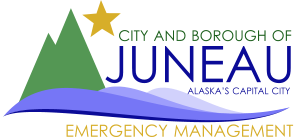Avalanche Advisory Archive Pre-2016
| Date Issued: | 2011-03-24 |
|---|---|
| Danger: | 2 |
| Trend: | 3 |
| Probability: | 4 |
| Size: | 2 |
| Problem: | 0 |
| Discussion: | The National Weather Service Forecasts- TODAY...PARTLY CLOUDY. HIGHS AROUND 42. LIGHT WINDS BECOMING TONIGHT...MOSTLY CLOUDY. ISOLATED SNOW AND RAIN SHOWERS LATE. FRIDAY...MOSTLY CLOUDY. SLIGHT CHANCE OF RAIN. HIGHS AROUND 43. SOUTHEAST WIND 10 TO 15 MPH. FRIDAY NIGHT...MOSTLY CLOUDY. CHANCE OF RAIN AND SNOW. LOWS We have received less than 2\" of new snows in the last week. This came in night before last. Yesterday temperatures hovered near freezing up high and we should have seen fair to rapid settlement. Moisture models show no precipitation in the forecast. We have seen light winds over the last few days. Yet small pockets of instability are present on N faces in gullies, drainages, and on steep wind deposited areas. Today has seen a lot of direct sunlight and warming. Expect to see point release sluffs in the steep open pitches. Avalanches are not expected to be large yet in longer steep areas with no flat runout they could create a fair amount of mass. Be aware of the slope angle in relation to the sun. Shaded slopes would see less of this type of activity. Avalanche danger is Moderate at this time. Simply do to not being greatly concerned with the size in the urban paths. Yet in the backcountry or on areas up the perseverance trail there still may be a little more concern on those sun exposed faces. |
| Tip: | Point Relsease - Loose Snow Avalanches - Sluffs: Loose snow sliding down a mountainside is called a loose snow avalanche. Small loose snow avalanches are called Sluffs. Loose snow avalanches usually start from a point and fan outward as they descend, and because of this they are also called ?point releases.? Very few people are killed by loose snow avalanches because they tend to be small and they tend to fracture beneath you as you cross a slope instead of above you as slab avalanches often do. The avalanche culture tends to minimize the danger of loose snow avalanches, sometimes calling them \"harmless sluffs.\" But, of course, this is not always the case. Houses have been completely destroyed by \"harmless sluffs,\" and if caught in one, it can easily take the victim over cliffs, into crevasses or bury them deeply in a terrain trap such as a gully. Most of the people killed in sluffs are climbers who are caught in naturally-triggered sluffs that descend from above--especially in wet or springtime conditions. Sluffs can actually be a sign of stability within the deeper snow when new snow sluffs down without triggering deeper slabs. Sluffs are usually easy to deal with but slabs are definitely not. Be aware of practices called \"SLUFF MANAGEMENT\" to avoid being swept in these self started point releases. |
